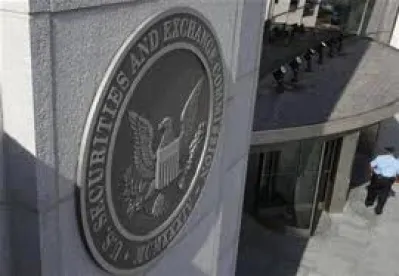On May 11, 2018, the Securities and Exchange Commission’s Division of Corporate Finance (the “Division”) released new Compliance and Disclosure Interpretations (“C&DIs”) comprising the Division’s new interpretations of the proxy rules and Schedules 14A and 14C. The new C&DIs replace interpretations previously published in the Division’s Proxy Rules and Schedule 14A Manual of Publicly Available Telephone Interpretations and the Division’s March 1999 Supplement to the Manual of Publicly Available Telephone Interpretations (“Telephone Interpretations”).
Of interest for equity compensation matters is C&DI 161.03, which clarifies disclosure obligations in the New Plan Benefits Table that is required in a proxy statement pursuant to Item 10(a)(2) of Schedule 14A when shareholders are being asked to approve the adoption or material amendment of an equity plan. Previously, telephone interpretation guidance provided that when the New Plan Benefits Table is required in a proxy statement, even if an amount of “0” will be entered in the table, all of the individuals and groups for which award or benefit information is required should be listed in the table. New C&DI 161.03 updates this guidance in providing an alternative method of satisfying the Item 10(a)(2) requirement for individuals and groups for which award and benefit information to be reported is “0” through a narrative disclosure accompanying the New Plan Benefits Table, rather than in the New Plan Benefits Table itself. While such individuals and groups must still be reported, this C&DI provides some flexibility in the manner of reporting.
The Division noted that some of the new C&DIs reflect “substantive” changes to the previously available Telephone Interpretations, some reflect “technical revisions,” and the remaining reflect only non-substantive changes. The following table includes each of the new C&DIs identified by the Division as containing substantive or technical changes, together with the previously available Telephone Interpretation guidance that has now been superseded.
Substantive Changes
| Prior Telephone Interpretation | New C&DI |
|
Cumulative voting rights disclosure
Rule 14a-4 The authority to cumulate votes among directors, in the discretion of the proxy, need not be printed in bold-face type on the proxy card itself pursuant to Rule 14a-4(b)(1). There should, however, be appropriate disclosure of cumulative voting in the proxy statement. zarb |
Cumulative voting rights disclosure
Question 124.01 Question: Rule 14a-4(b)(1) states that a proxy may confer discretionary authority with respect to matters as to which a choice has not been specified by the security holder, so long as the form of proxy states in bold-faced type how the proxy holder will vote where no choice is specified. If action is to be taken with respect to the election of directors and the persons solicited have cumulative voting rights, can a soliciting party cumulate votes among director nominees by simply indicating this in bold-faced type on the proxy card? Answer: Yes, as long as state law grants the proxy holder the authority to exercise discretion to cumulate votes and does not require separate security holder approval with respect to cumulative voting. [May 11, 2018] |
|
Preliminary proxy materials for shareholder submissions
7S. Rule 14a-4(c)(1), (c)(2) (a) If a company receives timely and complete notice of a matter submitted by a shareholder in accordance with Rule 14a-4(c)(2)(i), the company does not have discretionary voting authority on the matter. Thus, if the company wants to vote its proxies on the matter at the annual meeting, it must include the matter on its proxy card and provide in its proxy statement the necessary disclosure, including, inter alia, information on how and why the company intends to vote on the matter. In this circumstance, the company may not rely on the discussion in Section IV(D) of Release No. 34-40018 (May 21, 1998) on filing proxy statements in preliminary form. The benefits of that interpretive position are available only when a company properly may exercise discretionary voting authority on a non Rule 14a-8 matter… Here, because the company has received timely and complete notice, thereby precluding it from exercising discretionary authority, the company cannot file a plain-vanilla proxy statement under Rule 14a-6. (b) If the notice is timely but deficient (i.e., does not comply with the requirements listed in 14a-4(c)(2)(i) by, for example, failing to indicate that the proponent intends to deliver a proxy statement and form of proxy to holders of at least that percentage of the company’s voting shares necessary to approve the matter), the company would not be required to put the matter on its proxy card. However, the company’s ability to exercise discretionary authority is conditioned on including in its proxy statement advice on the nature of the matter and how the company intends to exercise its discretion to vote on that matter. The company’s ability to file a plain-vanilla proxy statement pursuant to Rule 14a-6 will depend upon, among other factors, the extent of its comments on, or discussion in, its proxy material of any solicitation in opposition in connection with the meeting. [Superseded] |
Preliminary proxy materials for shareholder submissions
Question 124.07 Question: The Division has permitted registrants to avoid filing proxy materials in preliminary form despite receipt of adequate advance notification of a non-Rule 14a-8 matter as long as the registrant disclosed in its proxy statement the nature of the matter and how the registrant intends to exercise discretionary authority if the matter was actually represented for a vote at the meeting. See Section IV.D of Release No. 34-40018 (May 21, 1998). Can a registrant rely on this position if it cannot properly exercise discretionary authority on the matter in accordance with Rule 14a-4(c)(2)? Answer: No. [May 11, 2018] |
|
Preliminary proxy statements for corporate name changes
Rule 14a-6(a) The caller raised the question whether a preliminary proxy statement need be filed in connection with a proposed corporate name change to be submitted for shareholder approval at the issuer’s annual meeting, along with a shareholder proposal and the election of directors. While the latter two items fall within one of five Rule 14a-6(a) exclusions from the preliminary proxy filing requirement, a change in the issuer’s name to delete the surname of a long-dead founder that bore no relation to a change in the present membership of the board of directors would not appear to qualify for exclusion under the literal reading of the rule. As set forth in Exchange Act Rel. No. 25217 (Dec. 21, 1987), the underlying purpose of these exclusions is “to relieve registrants and the Commission of unnecessary administrative burdens and processing costs associated with the filing the processing of proxy material that is currently subject to selective review in preliminary form.” Consistent with this purpose and the reason for the name change proposal, the Division staff advised the requestor that a preliminary proxy filing relating to the planned name change was not required. |
Preliminary proxy statements for corporate name changes
Question 126.02 Question: Is a registrant required to file a preliminary proxy statement in connection with a proposed corporate name change to be submitted for security holder approval at the annual meeting? Answer: No. As set forth in Release No. 34-25217 (Dec. 21, 1987), the underlying purpose of the exclusions from the preliminary proxy filing requirement is “to relieve registrants and the Commission of unnecessary administrative burdens and preparation and processing costs associated with the filing and processing of proxy material that is currently subject to selective review procedures, but ordinarily is not selected for review in preliminary form.” Consistent with this purpose, a change in the registrant’s name, by itself, does not require the filing of a preliminary proxy statement. [May 11, 2018] |
|
Information required pursuant to Note A of Schedule 14A
9S. Schedule 14A, Note A Note A to Schedule 14A requires that information called for by Items 11, 13 and 14 be provided when security holders are asked to authorize the issuance of additional securities to be used to acquire another specified company when there will be no separate opportunity to vote on the acquisition. This would be the case even when the securities will be sold in a public offering for cash to finance the transaction. [Superseded] |
Information required pursuant to Note A of Schedule 14A
Question 151.01 Question: A registrant solicits its security holders to approve the authorization of additional common stock for issuance in a public offering. While the registrant could use the cash proceeds from the public offering as consideration for a recently announced acquisition of another company, it has alternative means for fully financing the acquisition (such as available credit under an executed credit agreement in the full amount of the acquisition consideration) and may choose to use those alternative financing means instead. Would the proposal to authorize additional common stock “involve” the acquisition for purposes of Note A of Schedule 14A? Answer: No. Raising proceeds through a sale of common stock is not an integral part of the acquisition transaction because at the time the acquisition consideration is payable, the registrant has other means of fully financing the acquisition. The proposal would therefore not involve the acquisition and Note A would not apply. By contrast, if the cash proceeds from the public offering are expected to be used to pay any material portion of the consideration for the acquisition, then Note A would apply. [May 11, 2018] |
|
New Plan Benefits Table
Schedule 14A, Item 10(a)(2) If the New Plan Benefits Table is required, all of the individuals and groups for which award or benefit information is required should be listed (including those for which the amount to be reported is “0”). |
New Plan Benefits Table
Question 161.03 Question: If a registrant is required to disclose the New Plan Benefits Table called for under Item 10(a)(2) of Schedule 14A, should it list in the table all of the individuals and groups for which award and benefit information is required, even if the amount to be reported is “0”? Answer: Yes. Alternatively, the registrant can choose to identify any individual or group for which the award and benefit information to be reported is “0” through narrative disclosure that accompanies the New Plan Benefits Table. [May 11, 2018] |
|
Elimination of preemptive rights
** Schedule 14A ** A proxy statement requesting shareholder approval of the elimination of preemptive rights involves the modification of a security for purposes of Item 12 of Schedule 14A (and may be tantamount to creation of a new security, depending on the facts and circumstances, thereby raising an issue regarding Securities Act registration absent an exemption). Thus, the financial statement requirements of Item 13 would apply. |
Elimination of preemptive rights
Question 163.01 Question: Does a proxy statement seeking security holder approval for the elimination of preemptive rights from a security involve a modification of that security for purposes of Item 12 of Schedule 14A? Answer: Yes. Accordingly, financial and other information would be required in the proxy statement to the extent required by Item13 of Schedule 14A. [May 11, 2018] |
Technical Revisions
| Prior Telephone Interpretation | New C&DI |
|
Proxy card circulation in connection with Form S-4
** Rule 14a-6; Form S-4 ** A registrant can use its S-4 proxy statement/prospectus as a red herring. Since 1992, registrants have been able to solicit immediately upon filing of a preliminary proxy statement (absent invocation of confidential treatment under Rule 14a-6(e)(2)) rather than waiting 10 days pursuant to Rule 14a-6(a), so long as the proxy card (whether in preliminary or definitive form) is not circulated. Because a vote on the transaction described would amount to an investment decision with respect to the securities being registered, no proxy card could be sent until after the registration statement became effective and the final prospectus was furnished. |
Proxy card circulation in connection with Form S-4
Question 126.04 Question: Can a registrant that filed a Form S-4 send proxy cards to its security holders upon the filing of a preliminary proxy statement/prospectus? Answer: No, as Exchange Act Rule 14a-4(f) prohibits the delivery of proxy cards unless the security holders concurrently or previously received a definitive proxy statement filed with the Commission. Further, because a vote on the transaction described also would amount to a sale of the securities being registered, no proxy card can be sent until after the Form S-4 is declared effective and the final prospectus has been furnished to security holders. [May 11, 2018] |
|
Filing of additional communications
** Rule 14a-6; Form S-4 ** An issuer filed a registration statement on Form S-4 that contained its proxy material. After the effective date of the registration statement, the issuer decided to mail an additional letter to shareholders in connection with the transaction. This letter is filed as additional soliciting material pursuant to Rule 14a-6 upon first use. |
Filing of additional communications
Question 126.05 Question: A registrant files a registration statement on Form S-4 that contains its proxy statement disclosure pursuant to Instruction E.1 of Form S-4. After the effective date of the registration statement, the registrant sends an additional communication to security holders relating to the transaction. Does this communication need to be filed as other soliciting material pursuant to Rule 14a-6(b) no later than the date it is first sent or given to security holders? Answer: Yes. Given the communication was sent after the furnishing of the definitive proxy statement, it should not be filed under Rule 14a-12. [May 11, 2018] |
|
Disclosure requirements in connection with director elections
Schedule 14A An issuer recently solicited proxies for the election of 15 directors. In about three months, the issuer hopes to acquire another company, and will hold a special meeting to elect one of the officers of the newly acquired company as a sixteenth director. The issuer asked whether the proxy material for the special meeting would have to include the information required by Items 6 and 7 of Schedule 14A for the 15 recently elected directors. The issuer was informed that Schedule 14A would require that information to be included in the proxy statement. |
Disclosure requirements in connection with director elections
Question 158.01 Question: A registrant will hold a special meeting to elect one new person to its board of directors. The incumbent directors were elected at the annual security holder meeting three months ago and will not be up for re-election. Do the proxy materials for the special meeting have to include the information required by Items 7 and 8 of Schedule 14A for the incumbent directors? Answer: Yes. [May 11, 2018] |
|
Director disclosure in connection with merger
Schedule 14A, Note A B is to be merged into A in a Rule 145 transaction. B’s shareholders will be voting to approve the transaction and will become shareholders of A. A’s shareholders are not voting on the proposed transaction. Three of B’s directors will become directors of A. Pursuant to Note A to Schedule 14A the Form S-4 should contain the information required by Items 6 and 7 of Schedule 14A as to the A directors. |
Director disclosure in connection with merger
Question 158.03 Question: B is to be merged into A in a Rule 145 transaction. B’s security holders will be voting to approve the proposed transaction and will become security holders of A. A’s security holders are not voting on the proposed transaction. Three of B’s directors will become directors of A. Is it necessary to include the information required by Items 7 and 8 of Schedule 14A as to the directors of A in A’s Form S-4, which includes B’s proxy statement? Answer: Yes. Pursuant to Note A to Schedule 14A, the Form S-4 should contain the information required by Items 7 and 8 of Schedule 14A as to the A directors. [May 11, 2018] |






 />i
/>i

